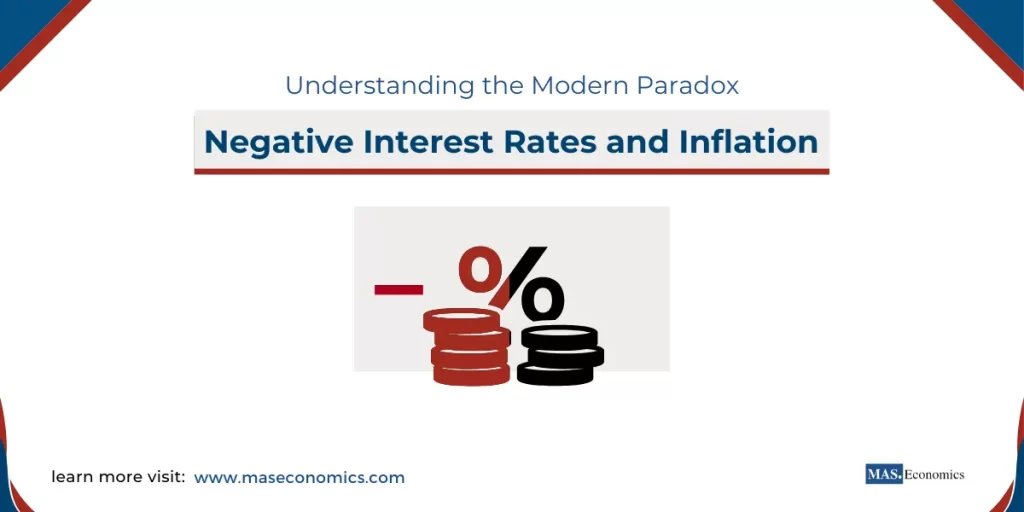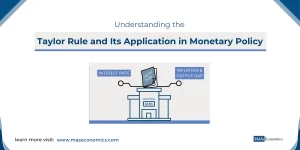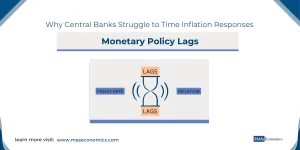In the aftermath of the 2008 financial crisis, the world’s leading central banks found themselves in uncharted territory. In a bid to avoid economic collapse and stimulate growth, many adopted a previously inconceivable policy: negative interest rates. While initially viewed as a temporary measure, negative interest rates have persisted in several economies, particularly across Europe and Japan, creating a complex relationship with inflation and presenting policymakers with both unique opportunities and challenges.
Understanding Negative Interest Rates
Negative interest rates occur when central banks set their policy interest rates below zero. In a typical scenario, banks earn interest by depositing money at the central bank. However, under negative interest rate policies, banks are effectively charged for holding money. The idea is to discourage banks from sitting on excess reserves, encouraging them to lend more freely, which would, in theory, stimulate spending, investment, and ultimately economic growth.
Why Resort to Negative Interest Rates?
Negative interest rates are an unconventional tool employed primarily in times of economic stagnation or crisis when traditional monetary policies, such as lowering interest rates, are no longer effective because those rates have already approached zero. This tool is intended to achieve several goals:
Stimulating Lending and Spending
By penalizing banks for holding reserves, central banks hope to push financial institutions to increase lending to businesses and consumers. More lending should lead to more economic activity, thereby stimulating demand and helping to push inflation towards target levels.
Preventing Currency Appreciation
Another reason for adopting negative interest rates is to prevent currency appreciation. When a country’s interest rates are lower than those of its trading partners, capital tends to flow out of that country in search of higher returns elsewhere, leading to a depreciation of the currency. For export-driven economies, a weaker currency can boost competitiveness by making their goods cheaper in foreign markets.
Negative Interest Rates: Historical Context and Global Adoption
The use of negative interest rates dates back to the aftermath of the 2008 global financial crisis when central banks across Europe, Japan, and Switzerland introduced the policy to combat deflationary pressures. The strategy of aligning with negative interest rates was not entirely new; international central banks coordinated to mimic the real interest rate policies of the United States, which had similarly adopted aggressive monetary easing after 2008.
The Convergence of Real Interest Rates
From 2010 onwards, we saw a significant convergence of real interest rates across various advanced and emerging economies. This alignment was driven by fears of currency appreciation and the resulting loss of export competitiveness if domestic interest rates were higher than those of the United States. For example:
Eurozone and Switzerland
In 2014, the European Central Bank (ECB) adopted a negative interest rate on bank reserves, dropping the rate to -0.1% and eventually further to -0.5% by 2022. Switzerland and Denmark followed suit, adopting negative reserve rates to prevent their currencies from appreciating against the euro.
Japan: Faced with persistent deflationary pressures and slow growth, the Bank of Japan introduced negative interest rates in 2016, hoping to spur domestic spending and stave off deflation.
This era of negative interest rates has not been limited to developed nations alone. Emerging economies, particularly those integrated into global capital markets, also moved towards adopting low or negative rates to maintain competitive exchange rates and mitigate capital inflows that could lead to currency appreciation.
The Relationship Between Negative Interest Rates and Inflation
Negative interest rates are intended to help central banks reach their inflation targets. By stimulating borrowing, spending, and investment, central banks aim to generate upward pressure on prices. However, the results have often been mixed, with countries experiencing varied degrees of success.
Boosting Demand to Increase Inflation
The primary way that negative interest rates are supposed to increase inflation is by encouraging consumer spending and business investment. When borrowing is cheaper, households are more likely to take out loans for significant purchases such as homes and cars, while businesses are more inclined to invest in new projects, expansions, and hiring. This increased activity should, in theory, boost aggregate demand and exert upward pressure on prices.
Example: Suppose a bank is charged a negative rate of -0.5% on its reserves held at the central bank. Instead of absorbing this cost, the bank might reduce the interest rate on loans to near zero to encourage customers to borrow and spend. Increased lending would mean more money flowing into the economy, boosting demand and, ultimately, price levels.
Challenges in Achieving the Desired Inflation
Despite these intentions, the effectiveness of negative interest rates in generating inflation has been questioned. Some of the key reasons include:
Bank Profitability and Lending Reluctance
Charging banks for holding reserves reduces their profitability, which could discourage lending instead of encouraging it. Many banks, facing squeezed profit margins, have opted to pass on the costs to customers or focus on managing risks rather than expanding their lending operations.
Uncertainty and Saving Behavior
Negative rates can have a counterproductive effect on consumer behavior. Faced with an uncertain economic future and negligible returns on savings, households may decide to save more rather than spend, particularly if they fear that their purchasing power will continue to erode.
Mixed Evidence on Inflation
The historical data paints a mixed picture. In the eurozone, the ECB’s introduction of negative rates has helped to stabilize inflation, but it has not consistently pushed it to the target level of 2%. In Japan, despite years of ultra-low and negative rates, inflation has remained stubbornly low, illustrating the challenges of using monetary policy alone to generate price growth.
Negative Interest Rates and Exchange Rate Effects
One of the more successful outcomes of negative interest rates has been their impact on exchange rates. By reducing domestic interest rates below those of other economies, central banks have successfully weakened their currencies, making exports cheaper and more attractive to foreign buyers. This effect has been particularly pronounced in export-dependent economies like Japan and Switzerland.
The Role of Arbitrage in Exchange Rate Stability
The concept of arbitrage plays a crucial role in maintaining exchange rate stability. When interest rates differ across countries, capital naturally flows from low-interest to high-interest regions in search of better returns. For example, if European interest rates are -0.5% while US interest rates are 1.5%, investors might move capital to the United States for a better return, causing the value of the dollar to rise and the euro to fall.
By lowering interest rates to match those of other economies—sometimes even making them negative—central banks can mitigate these capital flows and avoid significant currency appreciation. Maintaining exchange rate stability is critical for economies that rely heavily on exports, as a stronger currency makes goods less competitive internationally.
Implications for Financial Markets and Investors
The era of negative interest rates has had profound implications for financial markets and investors. It has forced both individual and institutional investors to rethink their strategies in an environment where the traditional expectations about returns are turned upside down.
A Search for Yield
With safe assets like government bonds offering negligible or even negative returns, investors have been forced to take on more risk in search of yield. This phenomenon has led to:
Asset Price Inflation
Negative rates have contributed to higher asset prices across multiple markets, including equities, real estate, and corporate bonds. As investors move away from government bonds, the increased demand for riskier assets drives their prices higher.
Compressed Yield Spreads
The spread between low-risk and high-risk assets has narrowed, meaning that investors are not being compensated as much for taking on additional risk. This dynamic has raised concerns about asset bubbles and the sustainability of valuations in certain markets.
Risks and Long-Term Consequences
While negative interest rates have helped prevent deflation and currency appreciation, they come with risks and potential long-term consequences.
Distortion of Financial Incentives
One concern is that negative interest rates distort financial incentives. Banks, businesses, and households are all used to operating in a world where money has a cost. When interest rates go negative, it challenges the basic rules of finance, leading to unintended behaviors. For instance, banks may find it more lucrative to invest in government bonds—even with slightly negative yields—rather than extending risky loans to businesses.
Pension Funds and Savings Erosion
Negative interest rates also have significant implications for pension funds and long-term savings. Pension funds rely on earning steady returns on their investments to meet their future obligations. With negative yields on traditionally safe assets, these funds face difficulties in achieving the necessary returns, potentially leading to funding shortfalls. Similarly, individuals saving for retirement or other long-term goals see their wealth eroded over time, especially if inflation continues to rise while savings yield remains negative.
Conclusion
The relationship between negative interest rates and inflation is complex and, in many ways, paradoxical. While the goal is to stimulate spending, encourage lending, and boost inflation, the effects are not always as expected. Negative interest rates have succeeded in preventing deflation and maintaining exchange rate stability, particularly in regions where avoiding a strong currency is crucial for export competitiveness. However, they have also introduced significant distortions into financial markets and raised concerns about long-term economic health.
As central banks consider the future of monetary policy, the lessons from the era of negative interest rates will be crucial. Understanding when, how, and why these rates work—and when they do not—will help shape responses to future economic challenges.
FAQs:
What are negative interest rates?
Negative interest rates occur when central banks set their policy rates below zero, effectively charging banks for holding excess reserves. This policy aims to encourage banks to lend more, thereby stimulating spending and investment in the economy.
Why do central banks implement negative interest rates?
Central banks resort to negative interest rates primarily to combat economic stagnation and deflation. By discouraging banks from holding onto reserves, the policy encourages lending and spending, which can boost economic activity and push inflation towards target levels.
How do negative interest rates affect inflation?
Negative interest rates are intended to increase inflation by stimulating demand. Cheaper borrowing costs encourage consumers to spend and businesses to invest, driving up aggregate demand and putting upward pressure on prices. However, the effectiveness of this policy in consistently achieving inflation targets has been mixed.
Why are negative interest rates used to prevent currency appreciation?
Negative interest rates can help prevent currency appreciation by making domestic assets less attractive to foreign investors. This discourages capital inflows, leading to a weaker currency, which benefits export-driven economies by making their goods cheaper and more competitive internationally.
How have negative interest rates been used globally?
Negative interest rates have been adopted in several economies, including the Eurozone, Japan, and Switzerland, particularly after the 2008 financial crisis. These policies were aimed at preventing deflation, encouraging lending, and avoiding currency appreciation.
What are the challenges associated with negative interest rates?
Key challenges include reduced bank profitability, as banks are charged for holding reserves, and the potential for unintended consumer behavior, such as increased saving instead of spending due to economic uncertainty. Additionally, the impact on inflation has often been less than anticipated.
How do negative interest rates influence financial markets?
Negative interest rates lead to lower yields on safe assets like government bonds, pushing investors towards riskier assets in search of better returns. This can result in asset price inflation and compressed yield spreads, raising concerns about potential bubbles and financial instability.
What are the risks of prolonged negative interest rates for pension funds and savers?
Pension funds face difficulties in achieving necessary returns due to the low yields on traditionally safe investments, potentially leading to funding shortfalls. For individual savers, prolonged negative rates can erode long-term savings, especially if inflation rises while returns on savings remain negligible or negative.
Have negative interest rates successfully boosted inflation?
The success of negative interest rates in boosting inflation has been mixed. While they have helped prevent deflation and supported modest inflation increases in some economies, such as the Eurozone, they have not consistently pushed inflation to central bank targets. In Japan, for example, inflation has remained stubbornly low despite prolonged use of negative rates.
What lessons can be learned from the era of negative interest rates?
The key lessons include the importance of understanding the limits of monetary policy in achieving inflation targets and the need to consider the broader economic implications, such as impacts on financial stability, bank profitability, and long-term savings. Future policies may need to balance these factors more carefully to navigate the challenges of low growth and low-inflation environments.
Thanks for reading! Share this with friends and spread the knowledge if you found it helpful.
Happy learning with MASEconomics




